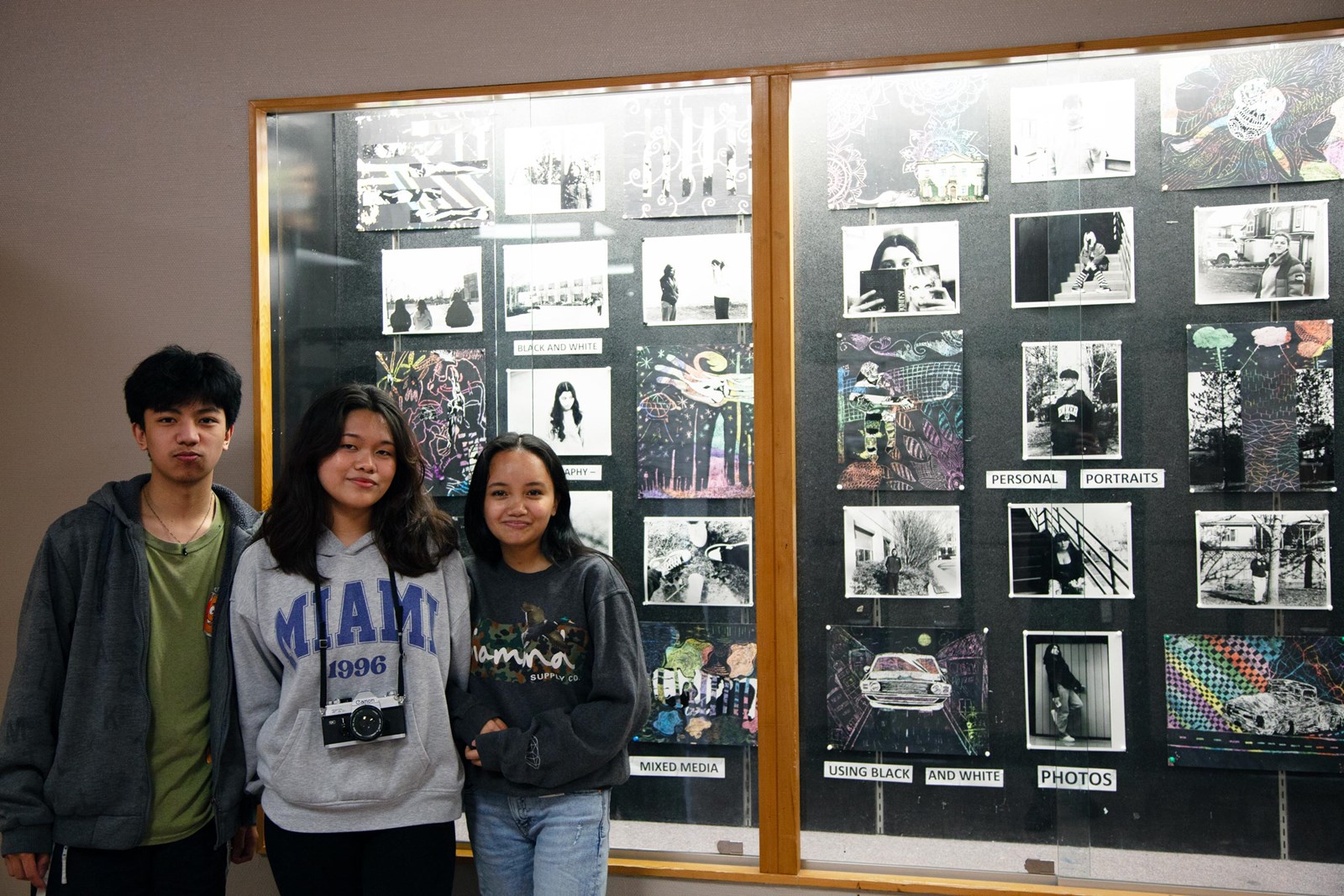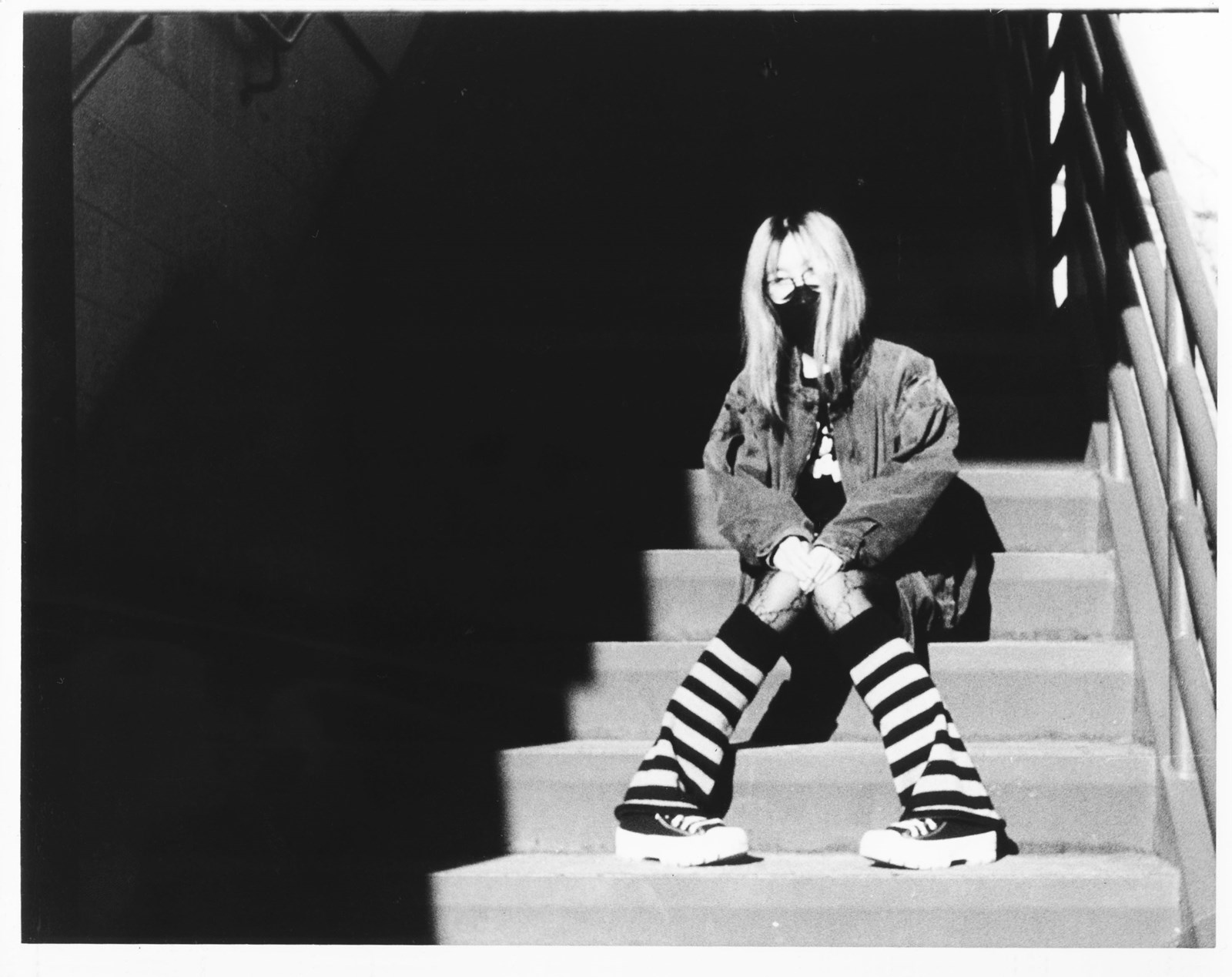Surrey students get back to the basics with darkroom photography
 Enver Creek photography students (left to right): Gilling Medroso, Dimple Mae and Leander Caticat.In an age of artificial intelligence, smartphones and self-driving cars, students at one Surrey school are still learning how to express themselves using a tried and true art form: film photography.
Enver Creek photography students (left to right): Gilling Medroso, Dimple Mae and Leander Caticat.In an age of artificial intelligence, smartphones and self-driving cars, students at one Surrey school are still learning how to express themselves using a tried and true art form: film photography.
At Enver Creek Secondary, students can learn the fundamentals of photography the old way, using film, manual cameras and darkrooms to process prints in Laura Hackett’s photography class. Despite ample access to digital cameras through smartphones, tablets and dedicated digital recording devices, the darkroom is still the first stop for students taking Hackett’s course.
“It helps them learn the basic principles of photography, how to manually use a camera and understand the process of how an image is actually captured to film,” said Hackett.
Hackett has been running the darkroom program at Enver Creek since the school opened in 1997. While technology has changed and evolved and cameras have found their way into everything from smartphones to sunglasses, student demand for the analog method has remained constant.
In the course, students learn how to load film into a manually operated single-lens-reflex (SLR) camera, and remove it without exposing the film. They then project their images onto photo paper and develop them into prints using chemical baths.
“They learn how to do it all by hand from start to finish,” explained Hackett. “There’s no auto-focus or quick enhance, so they really get to develop that appreciation for the craft that you just don’t get with a computer.”
Hackett also finds that by starting at the very beginning, students also develop an appreciation for what actually goes into capturing an image.
“They’re able to dissect an image and look at why a specific shot turned out the way it did. They start to see things through a compositional lens, the shapes, forms and patterns that make up the elements of design,” she explained. “It also allows them to understand what their phone or Photoshop may be doing when they activate some of the auto-edit features that may touch up things like exposure, contrast, or pixelation and noise.”
Once students have built the foundational knowledge using the film and darkroom, Hackett moves on to teaching digital photography and editing tools like Photoshop.
“They come into that knowing what they’re doing because they’ve played around with some of those features in the darkroom,” she said. “When they’re dodging and burning, they can appreciate how the computer lets you do that without consequence because they’ve done it in the darkroom and seen how parts of an image will get darker when using a photo enlarger.” A student project produced in the darkroom.
A student project produced in the darkroom.
The class has taught Grade 12 student Dimple Mae to look at the world in new ways when taking photos, a skill she now uses when taking simple snapshots with her cellphone.
“I’m a lot more picky now when I’m take photos or videos,” she explained. “Learning all the design and composition parts of taking photos made me a lot more aware of what I was capturing.”
Classmate Gilling Medroso was most interested in the technical side of things.
“It was really fun learning how to develop photos in the dark room,” he said. “I’m a big fan of science and so learning the manual process behind the chemical baths and watching it develop right in front of you was so cool.”
Hackett said she’s optimistic about the art form’s survival.
While some see content on social media like Instagram or TikTok as quantity over quality, Hackett said it’s clear to users when they see someone using their photography knowledge.
“You can tell when you’re looking at something done by someone who knows what they’re doing,” said Hackett.
“Skills like these carry forward to so many mediums and regardless of whatever next big social media or platform is, people are inherently visual creatures.”


